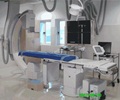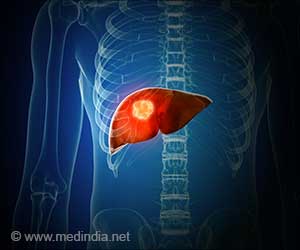Researchers at the University of Maryland have found that minimally invasive heart bypass surgery using a DaVinci robot means a shorter hospital stay and faster recovery for patients,
A DaVinci robot may be able to help bypass surgery patients stay for a shorter duration in the hospital as well as experience fewer complications because it is minimally invasive, researchers at the University of Maryland have found.
They also found that robotic heart bypass surgery makes good economic sense for hospitals.Robert S. Poston, M.D., a cardiac surgeon formerly at the University of Maryland Medical Center, who is the lead author of the study, said that using a surgical robot increases the cost of each bypass case by about 8,000 dollars.
He found that the robotic approach saves costs especially with high-risk patients who have lung or kidney disease or other health problems.
"Our study shows that there are health benefits to patients from the minimally invasive approach, both in terms of a shorter recovery and also looking at the function of the bypass graft months after the surgery," Stephen T. Bartlett, M.D., who is one of the study's co-authors.
For the study, the researchers examined 100 consecutive patients who had minimally invasive coronary bypass surgery using the robot. The technique requires no incisions except for a few small holes to insert instruments.
These cases were compared to a matched group of 100 patients who had the traditional open bypass surgery with a sternotomy, a surgical incision through the sternum.
Advertisement
However, the difference was even greater among patients considered to be at high risk. In that group, the average stay was five days with robotic surgery as compared to 12 days with the traditional technique.
Advertisement
The patients were followed up to one year after their surgery.
With the help of a CT angiography scan, the researchers found that those who had the robotic bypass were much less likely to have narrowing or clots in the bypass graft than those with the traditional bypass surgery from six months to a year after the operation.
Dr. Bartley Griffith, M.D., also a co-author of the study, said that the grafted vessels of more than 99 percent of the patients who had robotically-assisted bypass surgery were still open and functioning well compared to about 80 percent of those who had the open operation.
Researchers said the reason for the difference is that for patients who need multiple bypasses, surgeons can easily access two internal mammary arteries to use as the new bypass vessels rather than taking a section of vein from another part of the body.
On contrary, in traditional bypass operations, only one internal mammary artery is used while other bypasses are performed using a vein. The long-term success of the bypass, or patency of the target vessel, is superior with an internal mammary artery versus a vein.
The study will be presented at the 128th annual meeting of the American Surgical Association in New York on April 26, 2008.
Source-ANI
RAS/L







